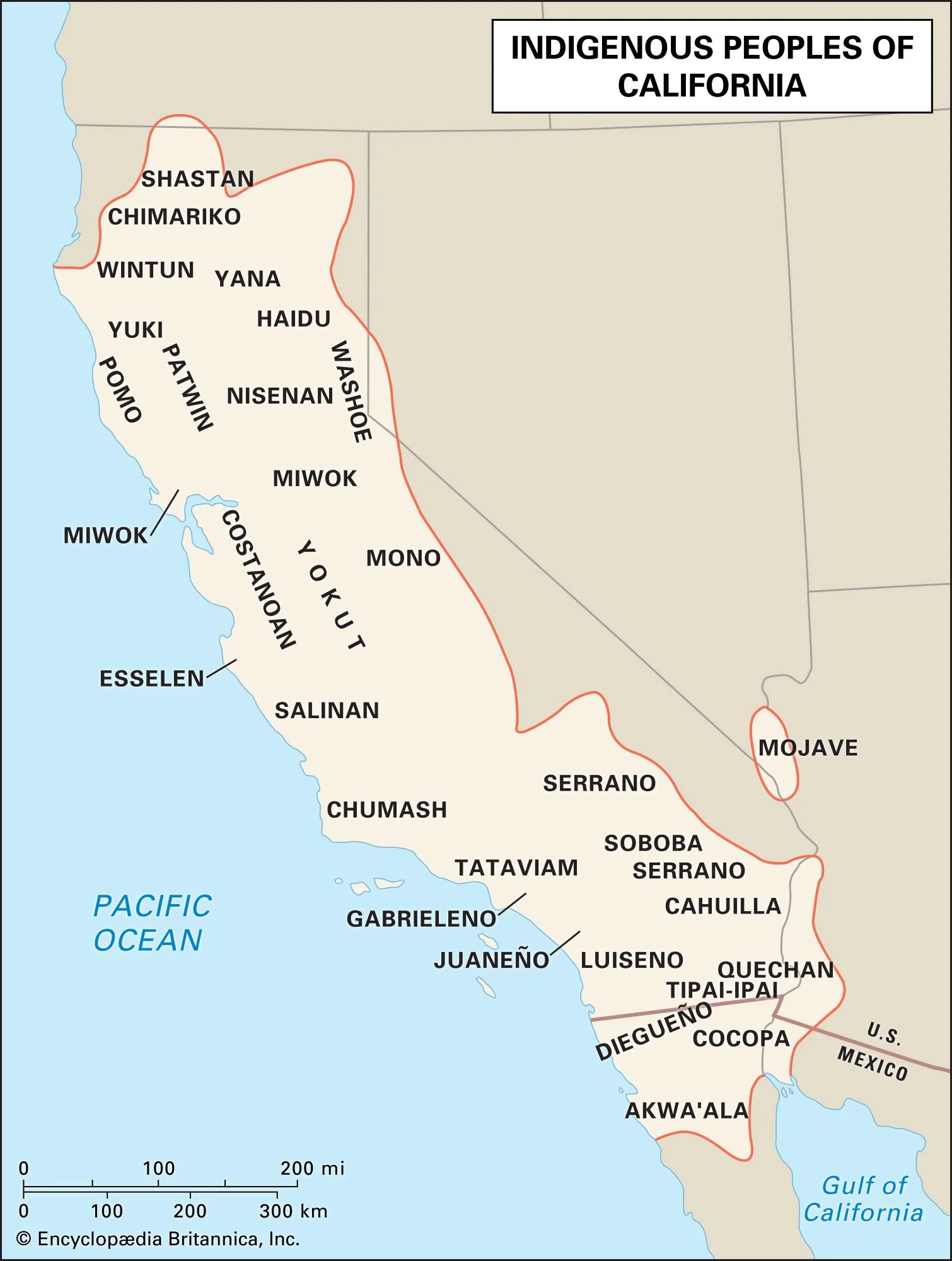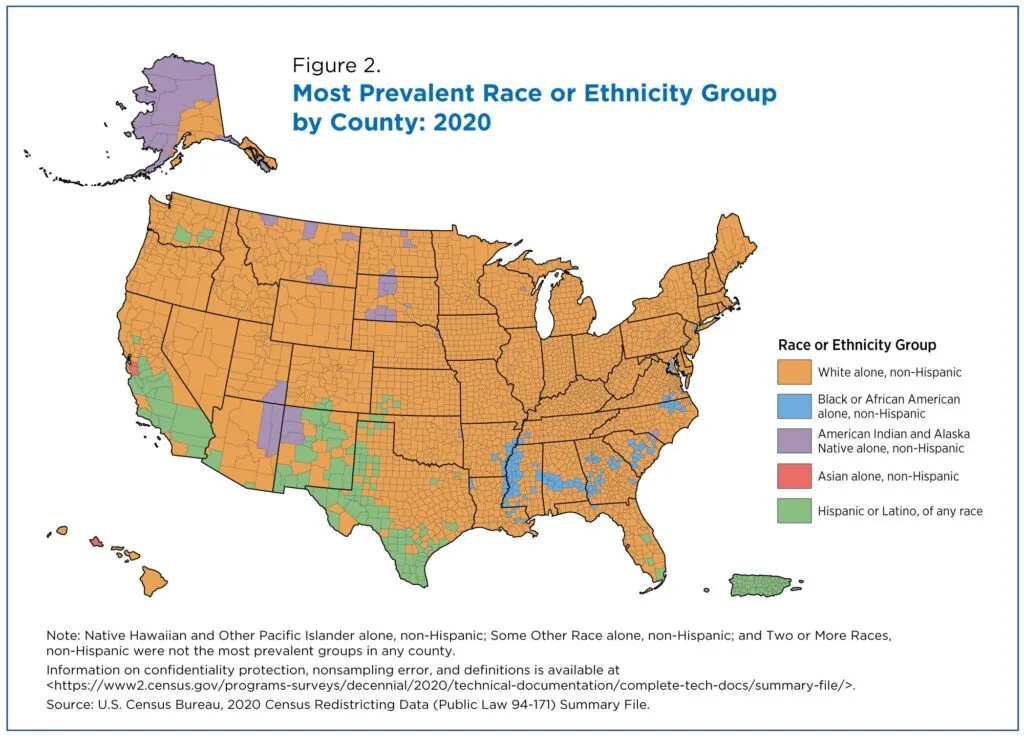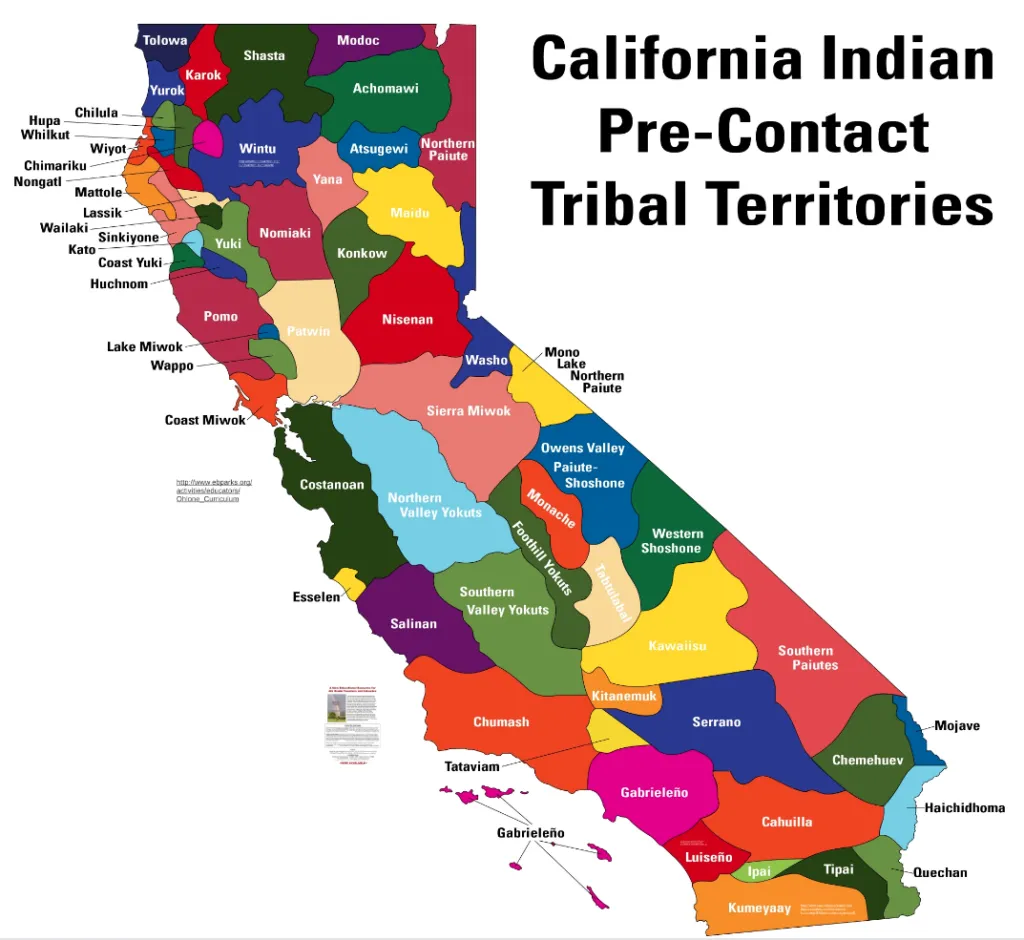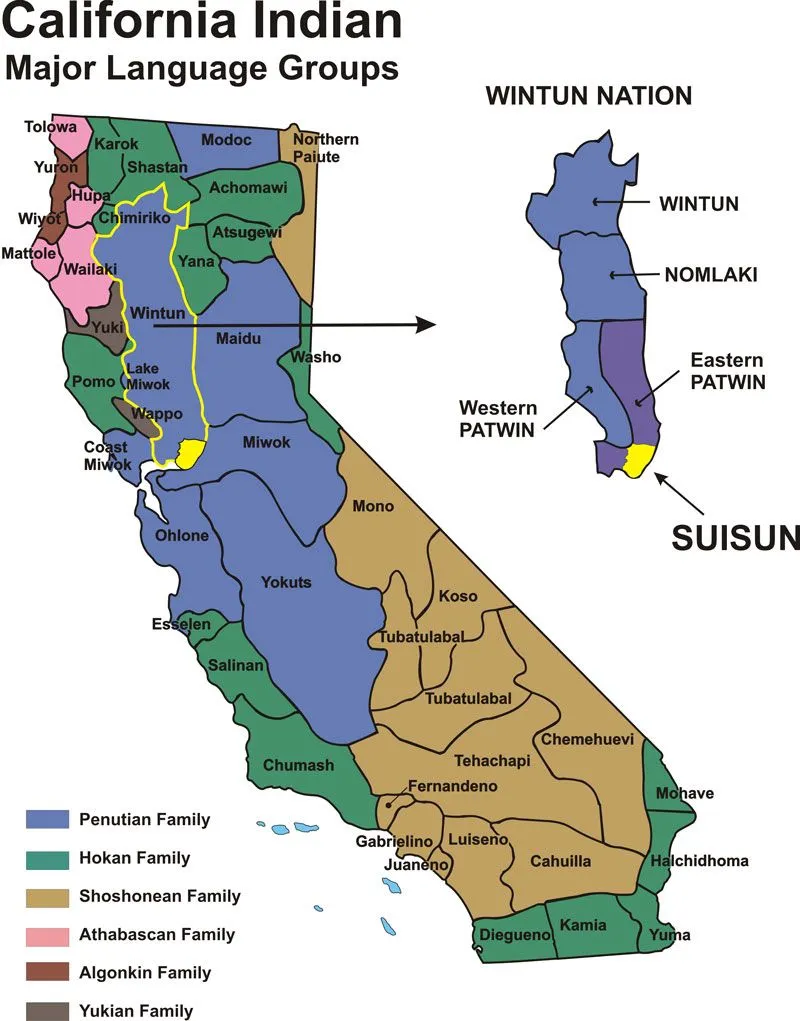Explore a wide selection of Native American clothing and accessories at our shop: NativeAmericanClothes.com. Discover the cultural richness and diversity of California’s Native American tribes through the California Native American Tribes Map. This comprehensive resource provides insights into the histories, traditions, and territories of these indigenous communities.
Explore the deep-rooted connections between the tribes and the Golden State’s landscapes. Immerse yourself in their unique stories and heritage, gaining a deeper appreciation for the invaluable contributions of California’s Native American tribes to the state’s rich tapestry.
The Latest California Native American Tribes Map

Exploring California’s Indigenous Heritage: Tribal Territories and Trust Lands
Intricately woven with history, culture, and deep-rooted connections to the land, California’s Native American tribes have left an indelible mark on the state’s landscape. The map below is a captivating glimpse into the traditional tribal territories and Tribal Trust Lands that cradle the California High-Speed Rail alignment.
Join us on this journey of discovery as we unravel the significance of these lands and the stories they hold.
Unveiling Tribal Trust Lands:
Tribal Trust Lands, encompassing reservations and Rancherias, are the keystones of Native American sovereignty. These lands are more than just geographical entities; they represent the enduring spirit of resilience and heritage.
The borders of Tribal Trust Lands are etched into history through treaties and agreements forged between tribes and the Federal government. As we explore this map, we’ll uncover the rich tapestry of cultures that thrive within these hallowed boundaries.
Traditional Tribal Territories:
Beyond the legal confines of Trust Lands, we delve into the heart of California’s indigenous history—the traditional tribal territories. These boundaries are a testament to ancestral legacies, ethnohistorical ties, linguistic diversity, and contemporary bonds with the land.
While the map offers a visual representation of these territories, it’s essential to remember that they are approximations. Native American Nations’ histories are intertwined, and the intricate web of overlapping borderlands is a testament to the complex relationships that have shaped California’s heritage.
As we navigate through this exploration, we invite you to delve deeper into the stories of California’s Native American tribes. Join us on a journey that transcends time, where the past meets the present, and where the land itself speaks of the profound connection between indigenous peoples and the Golden State.
What Native American tribes were in California?

California’s Indigenous Tapestry: Ancestral Roots and Unique Diversity
The Spanish explorers, while often credited with the discovery of California, were not the first to tread upon this enchanting land of wonders and extremes. Long before their arrival, adventurous Asian settlers embarked on an incredible journey, crossing the Bering Straits into Alaska thousands of years ago.
During a warmer climate and a now-vanished land bridge, these intrepid pioneers forged a path to North and South America. They would become the foundation of the diverse nations and tribes collectively referred to as “Indians” by the first European visitors to this hemisphere.
A Tale of Isolation:
California’s dramatic landscape, marked by imposing mountain ranges and sprawling deserts, served as a natural barrier, isolating its early inhabitants from the neighboring cultures of Mexico and the western United States. As a result, the indigenous population of California exhibited little physical resemblance to the Native Americans of the Great Plains and maintained no linguistic or cultural ties with these distant nations.
Unlike the larger tribes and nations to the east, California’s native groups were structured differently, with limited political organization. They often lived in substantial family groups or clans, a testament to their isolation from one another.
Diversity Amidst Division:
While European settlement arrived relatively late in California, it denied the native populations access to horses, which had already transformed the mobility of Great Plains tribes. Divided and isolated, California’s original inhabitants were culturally rich but linguistically diverse, with as many as 135 distinct dialects among them.
Tribes such as the Karok, Maidu, Cahuilleno, Mojave, Yokuts, Pomo, Paiute, and Modoc inhabited the region. The rugged terrain that divided these groups discouraged large-scale warfare, fostering a comparatively peaceful coexistence.
A Bounty of Nature:
California’s unique climate, characterized by limited rainfall during the growing season, posed challenges to agriculture. However, the region’s gentle climate and fertile soil provided abundant resources. Native Californians skillfully harvested wild nuts, berries, and fish from the streams.
The acorn, a dietary staple, was transformed into nutritious meal after careful processing to remove toxic acids. Interestingly, the first English-speaking Europeans to encounter California’s Native Americans observed their emphasis on gathering nuts and unearthing roots, coining the term “Diggers” to describe these resourceful groups.
A Thriving Population:
With a generous food supply, favorable climate, and an absence of large-scale conflicts, California’s indigenous population thrived. Estimates suggest that when European explorers first set foot on California’s shores, the native population numbered close to 300,000 individuals—comprising approximately 13 percent of the indigenous peoples in North America. California’s indigenous heritage is a testament to the resilience, diversity, and unique cultures that continue to shape the state’s identity to this day.
Are there any Native American tribes left in California?

Exploring the Indigenous Tapestry of Southern California
Unlocking the Richness of Southern California’s Indigenous Heritage
Southern California, a region as diverse as it is unique, unveils a captivating tapestry of indigenous cultures. From the northern reaches to the southern expanses, this land is adorned with a multitude of tribes, each with its distinct history and way of life. Join us on a journey through the vibrant pages of Southern California’s indigenous past.
Northern Enclaves:
In the northern expanse of this region, we encounter an array of tribes, each with its own story to tell. The Chumash, Alliklik, Kitanemuk, Serrano, Gabrielino, Luiseno, Cahuilla, and Kumeyaay tribes all left indelible marks on this land. However, their experiences were as diverse as the landscapes they inhabited.
Coastal Wanderers:
The windswept Channel Islands, inhabited predominantly by the Chumash-speaking peoples, were an offshore marvel. These island dwellers relied on large planked canoes known as “Tomols” for communication with their mainland counterparts. Crafted by a secretive guild of skilled artisans, these vessels carried both trade goods and passengers.
Further south, the Tactic-speaking communities of San Nicholas and Santa Catalina Islands also crafted planked canoes, fostering active trade with mainland villages and tribes. Along the shoreline, communities thrived on the abundant marine life of the ocean, bays, and wetlands.
Inland Abundance:
Heading inland, we encounter tribes like the Serrano, Luiseno, Cahuilla, and Kumeyaay, enveloped in the Sonoran life zone. Here, the landscape teemed with life, offering a bounty of rabbit, deer, acorns, seeds, and native grasses. At higher elevations, the pursuit of Desert Bighorn sheep became a way of life.
Diverse Communities:
Village life across Southern California varied immensely. From modest desert settlements with populations as low as a hundred souls to bustling Chumash villages housing over a thousand, each community had its unique charm. Conical homes constructed from arrowweed, tule, or croton were commonplace, while whale bone structures dotted the coastline and nearby Channel Islands.
Interior tribes fashioned clay storage vessels, often adorned with intricate paintwork. Baskets, brimming with unique designs, played a vital role in daily life. Catalina Island, a treasure trove, harbored a soapstone quarry, enabling artisans to craft intricate vessels, pipes, and cooking slabs from this soft and malleable stone.
Social Fabric:
Within these communities, a chieftain—sometimes a female—oversaw events and conflict resolution, guiding their people through the ebb and flow of life. Shamans and Indian doctors held a revered place in society, offering their wisdom and healing arts.
Rituals, including the use of hallucinogens like jimsonweed (Datura meteloides) in male puberty rites, were common. The intricate social fabric consisted of three classes: the elite, a thriving middle class, and a resilient lower class.
These robust and resourceful people were among the first to encounter the strangers who would forever alter the course of their history. The legacy of Southern California’s indigenous peoples endures, an integral part of the vibrant tapestry that is the Golden State.
Where are Native Americans located in California?

Exploring California’s Native American Heritage: A Journey Beyond Casinos
Unveiling the Rich Tapestry of California’s Indigenous Peoples
California, known for its diverse landscapes and cultures, harbors a hidden gem within its borders—the heritage of over 100 federally recognized tribes. Beyond the well-known resorts and casinos operated by these tribes lies a world waiting to be discovered. Join us as we embark on a journey to explore California’s Native American lands and experience the vivid tapestry of their history and contemporary lives.
A Kaleidoscope of Homelands:
Stretching from the majestic redwood forests in the north to the arid deserts along the Mexican border, California’s tribal lands are as varied as the terrain itself. Each federally recognized tribe has its own unique traditional homeland, and their stories are interwoven with the very fabric of the Golden State.
Beyond the Casinos:
While many travelers associate California’s tribes with opulent resorts and casinos, there is so much more to discover. Dive into the heart of Native American culture by visiting tribal cultural centers. These centers offer a glimpse into the rich heritage, art, and traditions of the indigenous peoples.
The Beat of Tradition: Powwows and Gatherings:
For a truly immersive experience, attend a powwow—an ancient Native American gathering that celebrates music, dance, and community. Feel the rhythm of traditional songs, witness mesmerizing dances, and savor indigenous cuisine. It’s a vibrant celebration that bridges the gap between the past and the present.
Untamed Natural Beauty:
Venture into unspoiled natural areas nestled within tribal lands. These pristine landscapes offer a unique perspective on California’s beauty. Explore lush forests, pristine lakes, and rolling hills, all while respecting the land and its indigenous stewards.
An Invitation to Discover:
California’s Native American tribes extend an invitation to explore their lands, culture, and history. Whether you seek to learn about ancient traditions, witness contemporary life, or connect with the natural world, this journey promises to be a transformative experience.
Join us as we unravel the captivating tapestry of California’s Native American heritage, a journey that promises to enrich your understanding of the Golden State in ways you never imagined.
What is the largest Native American tribe in California?

Unlocking the Legacy of California’s Largest Tribe: The Yurok Nation
Exploring the Rich Heritage and Environmental Stewardship of the Yurok Tribe
Nestled in the heart of California, the Yurok Tribe stands as the largest and most influential indigenous community in the state, boasting a membership of over 6,200 proud individuals. Their ancestral legacy is deeply rooted in the breathtaking landscapes of California, encompassing 7.5 percent of the state’s picturesque coastline. Join us as we delve into the world of the Yurok Tribe, uncovering their rich history, environmental initiatives, and commitment to sustainable development.
Guardians of the Coastline:
The Yurok Tribe’s ancestral territory stretches along the majestic California coastline, a pristine expanse that extends from the serene Little River in the south to the rugged beauty of Damnation Creek in the north. This captivating landscape is a testament to the deep connection between the Yurok people and their natural surroundings.
Preserving Nature’s Bounty:
At the core of the Yurok Tribe’s mission lies a profound commitment to environmental preservation. Their initiatives include the remarkable endeavor of condor reintroduction, safeguarding the delicate balance of fisheries, and the restoration and responsible management of the iconic Klamath River. Moreover, the Tribe actively advocates for dam removal, ensuring the free flow of vital waterways.
Harmony with the Land:
The Yurok Tribe’s dedication to preserving natural resources harmonizes seamlessly with their vision of sustainable economic development. They understand that thriving communities and a prosperous future are built on responsible stewardship of the land. Through innovative practices, they seek to create a delicate equilibrium between modern progress and ancestral wisdom.
A Legacy of Land Acquisition:
Land acquisition is a pivotal aspect of the Yurok Tribe’s journey. Their dedication to expanding their territory not only honors their heritage but also opens doors to new opportunities for generations to come. Through careful planning and unwavering determination, the Tribe continues to secure vital lands that enhance their self-sufficiency and cultural preservation.
Joining Hands for a Sustainable Tomorrow:
The Yurok Tribe welcomes all those who share their passion for preserving the environment and indigenous heritage to join hands in their noble mission. Together, we can pave the way for a sustainable and harmonious future, one that respects both the legacy of the past and the promise of tomorrow.
In the heart of California, the Yurok Tribe’s legacy shines brightly—a testament to the enduring spirit of indigenous communities and their unwavering commitment to the land and its people.
Explore the diverse tapestry of California’s indigenous heritage with the California Native American Tribes Map. Uncover the ancestral territories, cultural legacies, and contemporary presence of over 100 federally recognized tribes across this vibrant state.
Discover their rich history, traditions, and the remarkable ways in which these tribes continue to shape California’s cultural landscape today. Embark on a visual journey through time and tradition with the California Native American Tribes Map
Explore more about Native American Reservations at here



